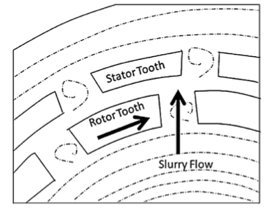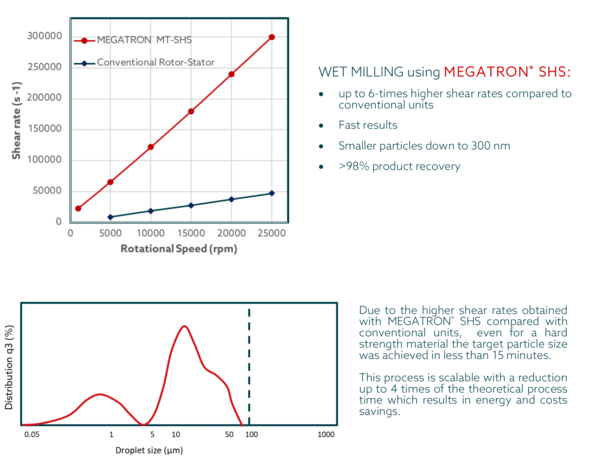Peat slurry
Application purpose
To grind suspended particles to a particle size of D100<100µm.
Challenges
- Control of temperature increase.
- High strength material.
- Generation of residuals during the process.
How did we achieve it?
Many products in the food, cosmetics and pharma industry exist in particulate form such as cocoa powder, facial powder, the pigments that are the base for lipstick or calcium carbonate powder that is frequently used as a functional filler in paints.
The size of the particles influences the taste, appearance, stability and functionality of the products1 and processes and for that reason its control is relevant.
In the pharmaceutical and cosmetic industry, for example, a well known technique for the reduction of the particle size is wet milling using high shear rates. In this process a slurry recirculates through a high shear source which results in the reduction of the size of the particles2. This process is useful for several applications.
Rotor-Stator for wet milling
The principle is based on the flow of the slurry through the channel formed when the rotor gap aligns with the stator gap. While the slurry flows, the rotor tooth impacts the particles and the energy imparted in the process results in the desired size reduction3. It is a combination of shear and impact effects.
 Source: Engstrom et al., 2013
Source: Engstrom et al., 2013


Do you want to have more information? Please contact us here or send us an email to science@kinematica.ch.
